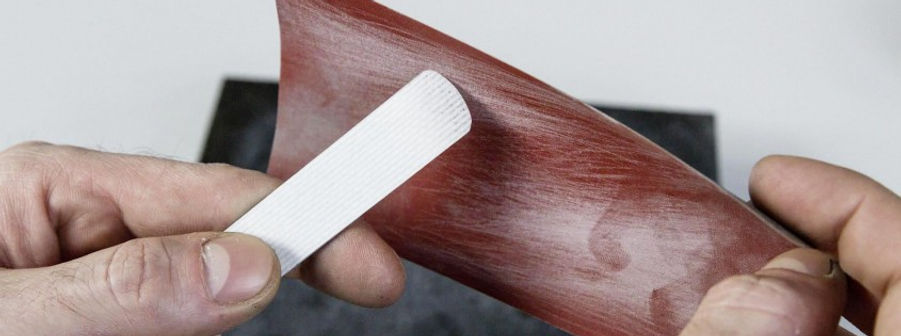
WORKING ON YOUR REEDS!
Within minutes, your reed can sound and play better! Amazing tools exist to make the shaving and cutting easy and simple. And, both Fiberreed and Forestone cut like butter. They are perfect for fine tuning. This page will share the techniques and products to take total control of your reeds!
Adjust and Perfect Your Reeds
Reed Geek Single Reed Tools & Videos
The Black Diamond G4 utilizes unique, state of the art, 100% USA wear-resistant alloy. With our beautiful “Black Diamond” wear finish fostering a smooth “buttery” glide to the cut, the G4 excels on both natural cane and all synthetic reeds.
Exciting features include a newly designed length, a refined radius tip for precision work and a comfortable rounded back scraper for further pinpoint scraping options. With two new, elongated, contoured and curved rail bevels, specially designed to profile rails and re-contour the spine of both single and double reeds, the G4 is a must for every serious reed player!
Includes self-locking neoprene bag and case, instructions included.
Focused on the needs of double reed player, but useful to all reed players.
The DoubleGeek line of handled tools and tips:
-
Useful for all woodwind players
-
Perfect for students, school and travel safe
-
Interchangeable handle options for complete control
-
Effective on both natural cane and synthetic reeds
-
Black Diamond wear finish for refinement of cut
-
100% American Made
ReedGeek’s “DoubleGeek” GEN2 Set
-
Implementing wildly successful Universal tool’s features
-
Engineered with two oversized bevels for reed spines, corners & tips
-
12 unique cutting surfaces in all
-
Includes deluxe, neoprene bag with a sewn-in microfiber cleaning cloth
-
Includes a 3 inch stainless steel handle and a small black palm handle
ReedGeek’s ReedGeek Edge
-
Revolutionary ‘Geek tips' provides unique scraping edges and bevels
-
Provide a very direct cut and remove cane both rapidly and smoothly
-
No chatter.
-
Excellent for shaping and profiling oboe and bassoon reeds
-
Can use your DoubleGeek for ultra-fine finishing after using the Edge
Reed Geek Double Reed Tools & Videos

If your reed doesn’t response well or seems to be too hard you have to make it thinner. Normally it is sufficient to work on the tip of the reed. The sound will get a bit brighter thereby. Take a piece of sanding paper and sand the tip of the reed on the first third of the cut carefully. After each sanding play your reed to find out what has changed. You continue this process until you get the desired result.
If the low register is hard to play you have to work on your reed with rougher sandpaper at the rear part of the cut. This is the last third of the cut where the reed achieves the full thickness and changes over into the shaft. It is necessary to remove more material to achieve noticeable result. It is essential here as well to play your reed after each sanding.
Making Your Reed Softer with Sandpaper
Making Your Reed Harder with Sandpaper

Take the fine sandpaper with grain 1000 and shorten the tip of the reed in a 90° degree angle (like filing nails). You may use a reed cutter as well. But the cutting edge will not be as smooth as before and should be reworked. You should not shorten more than 1 Millimeter (0,04 Inches) in general because the measures will change too much otherwise and will not harmonize anymore.
Some mouthpieces are smaller than the standard measures. To make your reed smaller take it at the shaft and sway it upright on the edge on sandpaper with grain 500. Take care to hold the reed only at the shaft. You should never give pressure to the tip half of the reed because this would change the form of the reed very fast. Cut your reed on both sides alternating until you reach the desired width. Finally you round the edges of the reed on the sides with fine sandpaper (grain 1000) at the part of the reed where the lips lay on it.
Making Your Reed Smaller with Sandpaper
Take the fine sandpaper with grain 1000, work in a 90° angle (like filing nails) and bring the reed tip into the desired form.






